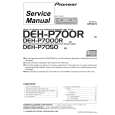|
|
|
Productos
|
|
Información
|
|
Destacado
|
|
|
 |
|
|
No hay comentarios de productos.
TEST PROCEDURES
1. Bias Adjustment Setup and Procedure 1.1 Locate the -85V negative terminal found on the capacitor (C4). See Figure 1 for the location of C4. Note: The 1801 and very early 1800's had two lugs on the caps. One with two or three wires and one single wire. The later production 1800 had three lugs on the capacitor. Either way the lug with the two or three wires is the lug to disconnect from the capacitor. All other lugs remain. 1.2 Remove the lug with two or three wires connected to it. 1.3 Connect a 0-200mA meter between the disconnected lug and the - terminal on the capacitor C4. 1.4 Disconnect the PCB that is not being tested by unplugging the multiple pin connector. 1.5 Turn the amplifier on with no input signal applied and adjust the bias pot (R13) for 90mA with the board cold. Note: The PCB must be removed from the chassis for the bias to be adjusted. 2. Frequency Response Procedure 2.1 Apply a 1Vrms, 1kHz signal to the input. 2.2 Reference a dB meter to the output. 2.3 Check the response from 20Hz to 20kHz. The response should not exceed ±1 dB. Refer to the response specification on page 2. 3. DC Offset Procedure 3.1 With no signal applied measure the DC offset at the output. It should measure 250mV or less. 4. Power Output Procedure 4.1 Connect an 8 ohm, 250 Watt load to the output. 4.2 Apply a 1.75Vrms, 1kHz signal to the input. 4.3 Turn the gain controls up to the point where the clipping LED's just begin to light up and check the output for 250 watts. 4.4 Repeat the steps above for a 4 ohm load. The output measurement should be 400 watts. 5. Harmonic Distortion Procedure 5.1 With the unit connected as in procedure 3, turn the gains up to just before clipping and check the distortion at the frequencies of 20Hz, 5kHz, and 10kHz. 5.2 The distortion limits are �.15% from 20Hz to 5kHz and �.5% from 5kHz to 10kHz. 6. Thermal Cutoff Procedure 6.1 Apply a signal to the unit with the outputs loaded ( 8 or 4 ohms ). Short one channel at a time until the unit goes into thermal cutoff. The thermal indicator should turn on and the output of the unit should be off. 6.2 Disconnect the short from the output. Wait until the unit comes out of thermal cutoff. You can speed this process by cooling the PCB with a fan. 6.3 Once the unit is cooled apply a signal to the channel you had shorted to check to see if its operational. 6.4 Apply a signal to the other channel and short the output. Wait for the thermal indicator to come on then remove the short and cool the PCB.
9
|
|
 |
> |
|

